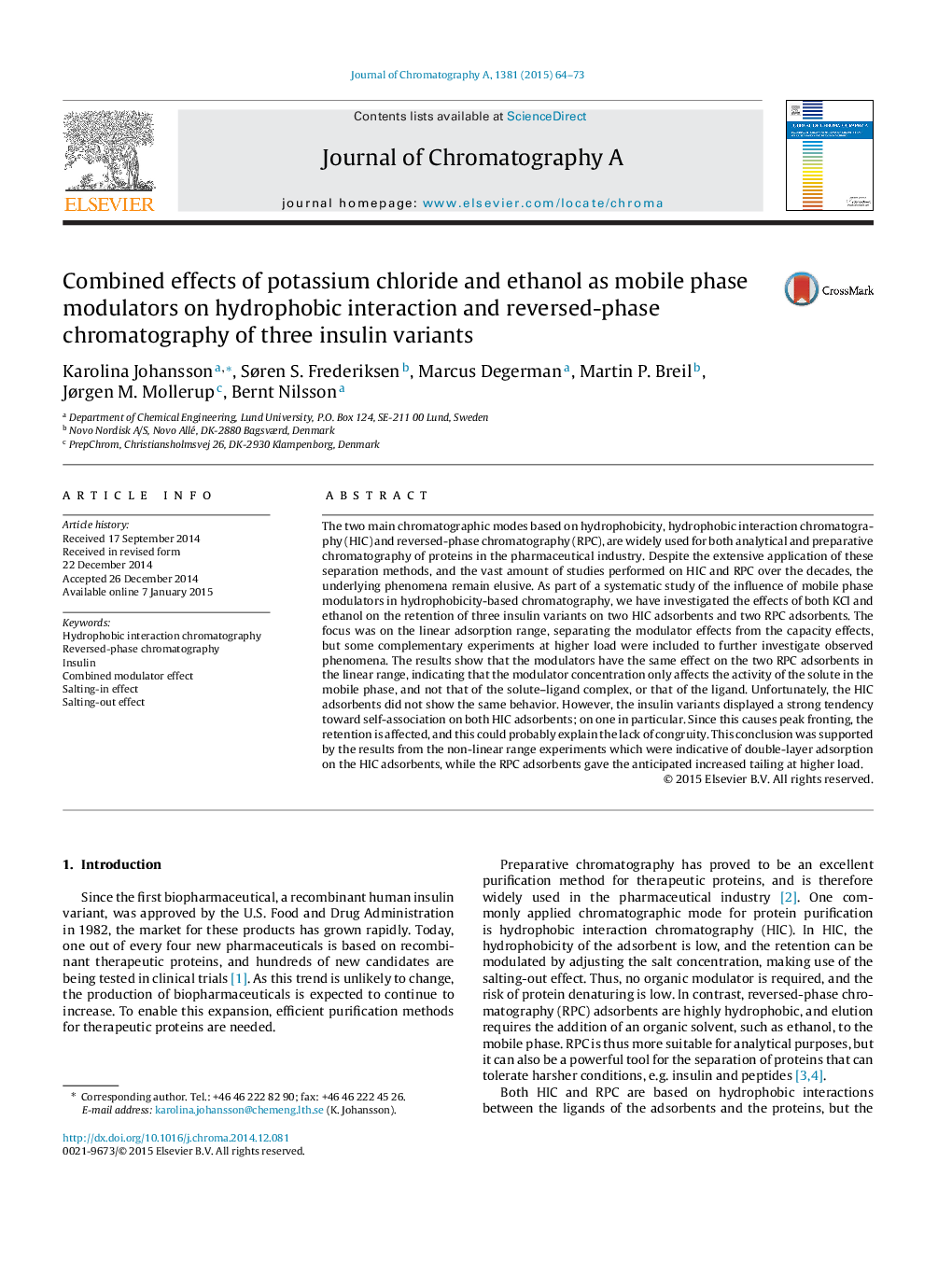| Article ID | Journal | Published Year | Pages | File Type |
|---|---|---|---|---|
| 7612021 | Journal of Chromatography A | 2015 | 10 Pages |
Abstract
The two main chromatographic modes based on hydrophobicity, hydrophobic interaction chromatography (HIC) and reversed-phase chromatography (RPC), are widely used for both analytical and preparative chromatography of proteins in the pharmaceutical industry. Despite the extensive application of these separation methods, and the vast amount of studies performed on HIC and RPC over the decades, the underlying phenomena remain elusive. As part of a systematic study of the influence of mobile phase modulators in hydrophobicity-based chromatography, we have investigated the effects of both KCl and ethanol on the retention of three insulin variants on two HIC adsorbents and two RPC adsorbents. The focus was on the linear adsorption range, separating the modulator effects from the capacity effects, but some complementary experiments at higher load were included to further investigate observed phenomena. The results show that the modulators have the same effect on the two RPC adsorbents in the linear range, indicating that the modulator concentration only affects the activity of the solute in the mobile phase, and not that of the solute-ligand complex, or that of the ligand. Unfortunately, the HIC adsorbents did not show the same behavior. However, the insulin variants displayed a strong tendency toward self-association on both HIC adsorbents; on one in particular. Since this causes peak fronting, the retention is affected, and this could probably explain the lack of congruity. This conclusion was supported by the results from the non-linear range experiments which were indicative of double-layer adsorption on the HIC adsorbents, while the RPC adsorbents gave the anticipated increased tailing at higher load.
Keywords
Related Topics
Physical Sciences and Engineering
Chemistry
Analytical Chemistry
Authors
Karolina Johansson, Søren S. Frederiksen, Marcus Degerman, Martin P. Breil, Jørgen M. Mollerup, Bernt Nilsson,
